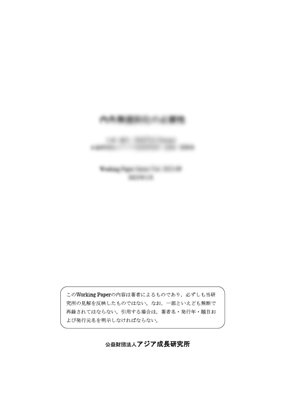A Disequilibrium Model of the Korean Credit Crunch

| 執筆者 | Ehung Gi Baek |
|---|---|
| 発行年月 | 2002年 8月 |
| No. | 2002-22 |
| ダウンロード | 320KB |
内容紹介
Our main purpose is to identify the periods of the Korean credit crunches after 1992 from which relevant data are available. To understand the time series properties of the data, we apply the Baxter-King band-pass filter and the Cochrane-Campbell-Mankiw variance ratio test to Korean loans and deposits. Cyclical components of the two series have shorter periods than the average business cycle and their amplitudes become huge around the financial crisis. Also the two series show strong persistence. We presume that rapid changes in the Korean financial market such as financial liberalization, capital market opening and introduction of the deposit insurance system etc. during the 1990s generated those permanent shocks.
Using a diseqilibrium model, we identify the periods of the Korean credit crunch. There appears no severe credit crunch in the first half of 1990s. However, five credit crunches have been identified since 1995. Three of them occurred before the financial crisis. An interesting fact of the Korean credit crunches is that they occurred between December and April of the next year. Such a phenomenon may show a seasonal pattern of the credit crunch. Even though the credit crunch right after the financial crisis did not last for 4 months, the decreasing trend of the real loans continued for a year. The most recent credit crunch started from February 2001 and is estimated to have lasted for 3 months.
The main cause of the recent credit crunch might come from the credit risk of firms and remaining uncertainty in the loan market. This uncertainty is in part caused by delay of the overall economic reforms. Regarding the policy to solve such a problem, the appropriate direction is to clear the loan market of uncertainty and reduce the credit risks of firms rather than to enforce credit expansion on commercial banks.
While estimation of a disequilibrium model obviously sheds light on some aspects of the Korean credit crunches, there is a certain limitation to understanding the underlying structure behind the estimation result. Investigation of changes in the economic system and institutional factors will supplement the lack of proper explanation of the credit crunches.
